Best Condenser Mic Selection 2024 - Small to Large Diaphragm
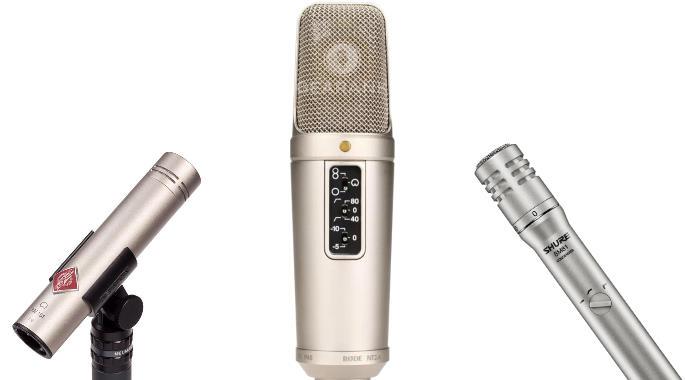
Author & Contributors
Raphael Pulgar
I've been an audio engineer for 20 years specializing in rock and metal recordings. I also play guitar and produce original music for my band and other content creators.
Best Condenser Mic Under $200 - Large Diaphragm
AKG P120
Cons
- Untreated rooms may hinder the mic's potential
Pros
- Good for both singing and speech
- Decent weight and a sturdy metal grill.
- Great tone for delicate sounding vocals
- The built-in low cut and attenuator is nice feature for this price point
If you're an aspiring home studio enthusiast looking for a remarkable yet affordable microphone, the AKG P120 Condenser Microphone is the perfect choice. This microphone packs a punch when it comes to quality and versatility, making it an excellent investment for those who want to create magic with their voice.
The P120 microphone is a true performer who excels in singing and speech applications. Whether recording vocals for your next hit song or narrating a podcast, this microphone captures every nuance of your voice with exceptional clarity and precision.
What's more, the P120 boasts a solid build with a sturdy metal grill and a decent weight that makes it feel robust and durable. So, you can rest assured that it can handle rough handling without compromising quality.
One of the best things about this microphone is its built-in features, such as the low-cut filter and attenuator, which give you more control over your recording environment. And the best part? It comes at an affordable price point, making it accessible to everyone.
However, it's worth noting that the performance of the P120 microphone may be affected by the acoustics of your recording space. If your room lacks proper acoustic treatment, it may hinder the mic's full potential. So, make sure you set up your recording space correctly to get the most out of this gem.
In summary, the AKG P120 is an excellent choice for those who want to balance quality and affordability. If you're a home studio enthusiast who likes to create stunning recordings, this microphone won't disappoint you. Are you looking to upgrade your recording game? Investing in this beauty could be your next step towards achieving it.
Specifications
- Type: Condenser
- Polar Pattern: Cardioid
- Frequency Response: 20Hz-20kHz
- Impedance: 200 ohms
- Max SPL: 130dB, 150dB w/Pad
- Applications: Recording instruments, Singing, Voiceovers, Podcasts
- Power Requirements: +48V phantom power
| Website | Source | *Rating Value |
| YouTube | Podcastage | 90/100 |
Audio-Technica AT2035
Cons
- Not the most neutral mic
- Accessories feel cheap
- Single polar pattern limits versatility
Pros
- Great all-rounder for various sources
- No "cheap condenser" brittleness at the high end
- Low Noise floor
- Great Background Noise Rejection
Thanks to its large diaphragm design, the Audio-Technica AT2035 works well with most sound sources, including vocals and acoustic guitars. It's not the best condenser mic for vocals, but it gets the job done really well for the price.
Its versatility is expanded further with its relatively high SPL handling at 148dB Max SPL, along with its built-in 10dB pad and Low-frequency roll-off (80Hz, 12dB/octave) switch.
Positioning is a bit limited with its cardioid polar pattern, but on the flip side, this helps minimize background noise, which makes this mic viable for studio recording use.
The diaphragm size is larger than its more affordable sibling, the AT2020.
The noise floor of -12db is better than many mics in this price range.
It comes with a sturdy metal chassis along with bundled accessories that include a shock mount and storage pouch.
All in all, the Audio-Technica AT2035 is a good condenser mic for studio all around use, great for home studios thanks to its tonality and low noise floor.
Those looking for a more neutral mic may have to look elsewhere.
Specifications
- Type: Condenser
- Polar Pattern: Cardioid
- Frequency Response: 20 to 20,000 Hz
- Impedance: 120 ohms
- Max SPL: 148 dB
- Applications: One of the best condenser vocal mic options, also good for instruments.
- Power Requirements: 11V to 52V DC, 3.8 mA typical
| Website | Source | *Rating Value |
| Podcastage | Bandrew Scott | 94/100 |
| MusicRadar | Chris Corfield | 90/100 |
| Home Brew Audio | Ken Theriot | 80/100 |
| RecordingHacks | Fernando Curiel | 95/100 |
Audio-Technica AT2035 Frequency Response and Polar Pattern Charts
Author's Pick
Here is a Large-Diaphragm condenser mic that I own that has a great, upfront studio quality sound with lots of detail. It might not be for everyone though. Read on to find out why.
Rode NT1
Cons
- Heavy shockmount (metal variant)
- Cardioid only
Pros
- Vintage sound signature reminiscent classic German microphones
- Great build quality and durability
- Low self-noise
Rode Microphones famously pitted this microphone against a Neumann U47 in this video. That prodded me to give it a shot to see if it can get me anywhere near the experience I had with working on tracks recorded with the seemingly magical, German-engineered U47
The Rode NT1 (Black) is one of the most commonly recommended Condenser Mics at this price. It's relatively simple: Cardioid-only, no other switches or pads. The mic itself is a departure from the NT1-A and has nothing in common (tonally at least) with the original NT1.
This version, released in 2017, aims more towards the vintage end of the spectrum with regards to tonality. My first impression of the mic was great. Depending on the package you get, some stores offer the Rycote Lyre-style shockmount with a paddle-like metal pop filter, while others carry a more traditional metal shockmount with elastic bands plus a fabric pop filter. Regardless of the paired accessories, the mic is the same in either. I had the one with the metal shockmount which was built solidly.
Moving onto the mic itself, the finish feels great to the touch. It has a high quality matte black finish with the logo, serial number and other details laser etched on the body. The edge terminated capsule is visible through the headbasket. The one on mine came slightly misaligned but it was only a matter of unscrewing the endcap and realigning the capsule and closing it. Not really a problem for me but it might be for some that are particular with how their products come out of the box.
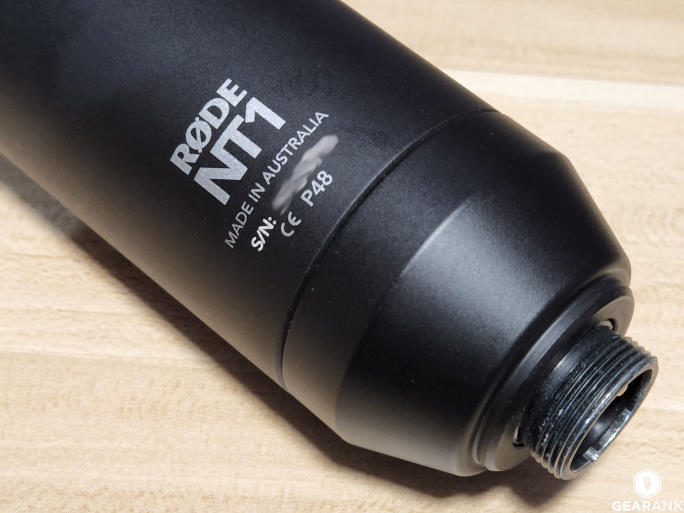
The Rode NT1 is made in Australia with high quality components and are housed inside a 6061 Aluminum enclosure with the details laser etched. (S/N blurred for privacy)
Plugging it in and firing up the phantom power, I got to do a preliminary mic test with the peaks hitting around -10dbfs. Consider the NT1's sound as more of a blank canvas rather than an already finished painting and things will suddenly fall into place. One feature to support this is the NT1's extremely low self-noise. This enables the use of heavy tone shaping without bringing up the mic's inherent noise floor (not counting environmental noise of course). Recording in a well-treated room and you will be rewarded with a recording that can take a lot of processing and still sound good.
On other aspects, handling noise was actually very minimal. The capsule is internally shockmounted with a Rycote cradle. I use the NT1 for streaming and voice overs and moving the mic around while I do so doesn't result in overbearing thumps and thuds.
With all this praise, I have to note that I have a few caveats with the kit. The shockmount is solidly built but very heavy. The fabric mesh pop filter is built into the shockmount and it adds to the weight. Unless you're using a straight mic stand, you will need a heavy duty boom mic arm to carry the weight of the mic kit.
It comes in cardioid only pickup pattern with no pads or filters. This limits its versatility especially with loud sound sources. The tonality is useful enough for most cases, however.
The Rode NT1 is a great mic for vintage tones without the vintage price. The bundled accessories make it great for startup studios and home producers.
Specifications
- Type: Pressure Gradient Condenser
- Polar Pattern: Cardioid
- Frequency Response: 20 to 20,000 Hz
- Impedance: 100 ohms
- Max SPL: 132 dB
- Applications: Great for recording vocals and acoustic instruments.
- Power Requirements: P24v and P48v
| Website | Source | *Rating Value |
| Gearank | Raphael Pulgar | 95/100 |
| Sound on Sound | Paul White | 90/100 |
| MusicRadar | Trevor Curwen | 90/100 |
Rode NT1 Frequency Response and Polar Pattern Charts
Best Condenser Mics Under $200 - Small Diaphragm Condensers
Shure PGA181
Cons
- A bit heavy. May tip over light mic stands
- Not the widest frequency range
Pros
- Great value
- Very durable
- Versatile enough for voice and instruments
- Surprisingly good as a room mic for orchestras
The Shure PGA181 is a versatile condenser mic that lives up to the pedigree. Unlike standard top-address microphones like the SM57, the PGA181 challenges norms by accommodating unconventional placements, daring to hang in front of a guitar cabinet, despite being rarely recommended by experts.
One of its most striking features is its maximum SPL of 138dB. This makes it a good condenser for handling loud sound sources. Often referred to as the 'desert island microphone' in forums, the PGA181's frequency response is clear and adaptable, excelling in various scenarios, from capturing vocals to delicately handling orchestral percussion.
While praised for its adaptability, some reviewers view it as a 'Jack-of-all-trades, master of none.' Additionally, its weighty build might pose issues with certain microphone stands, requiring sturdy support. Nevertheless, the Shure PGA181 remains a reliable and versatile choice for music production projects, making it an excellent starting microphone for those beginning their musical journey.
Specifications
- Type: Condenser
- Polar Pattern: Cardioid
- Frequency Response: 50Hz-20kHz
- Impedance: 120 ohms
- Max SPL: 138 dB
- Applications: Ideal for instrument and vocal recording
- Power Requirements: 48 V ± 4 V
| Website | Source | *Rating Value |
| MusicRadar | Tom Bradley | 100/100 |
Best Condenser Mics Under $300 - Large Diaphragm Condenser Microphones
Lewitt LCT 440 Pure
Cons
- Cardioid only
- Can get sibilant
Pros
- Great neutral midrange with a silky smooth high end usually only heard on ultra-expensive microphones
- High quality bundled accessories
- Low self-noise makes it great for recording quiet sources and room tone
- Excellent for pop vocals, acoustic guitar or anything where detail and brightness are desired
Lewitt Audio was founded by Roman Perschon out of a desire to make innovative products that don't just rehash older designs from audio yesteryear. The LCT range is their take on the Large Diaphragm condenser design and includes cutting edge systems like the 1040 Tube Condenser.
The demand for a more affordable, project studio oriented product saw the release of the LCT 440 Pure. A distillation of their design philosophy into only the most essential pieces. The 440 Pure is a cardioid only LDC with no other features. On paper, this might not sound like much to offer, but the mic comes in an attractive package of both a shock mount, and 2 pop filters (foam and metal mesh).
It definitely sounds different from other mics in its class like the Aston Origin and Rode NT1. With so many glowing reviews for it, I was surprised that no one has made the comparison to top-tier, very expensive microphones yet.
It has a neutral midrange with a sweet, airy high end that you can only get from classics like the Telefunken ELA M 251e and the Sony C800g (with some examples of the 251e having slightly more harmonically rich low mids vs the c800g). I have been fortunate enough to record audio with these mics and I can easily say the 440 Pure shares the same "pop vocal" sheen that the aforementioned mics offer. What it lacks compared to these mics is the subtle harmonic content that gives a feeling of "compression" on specific frequency ranges.
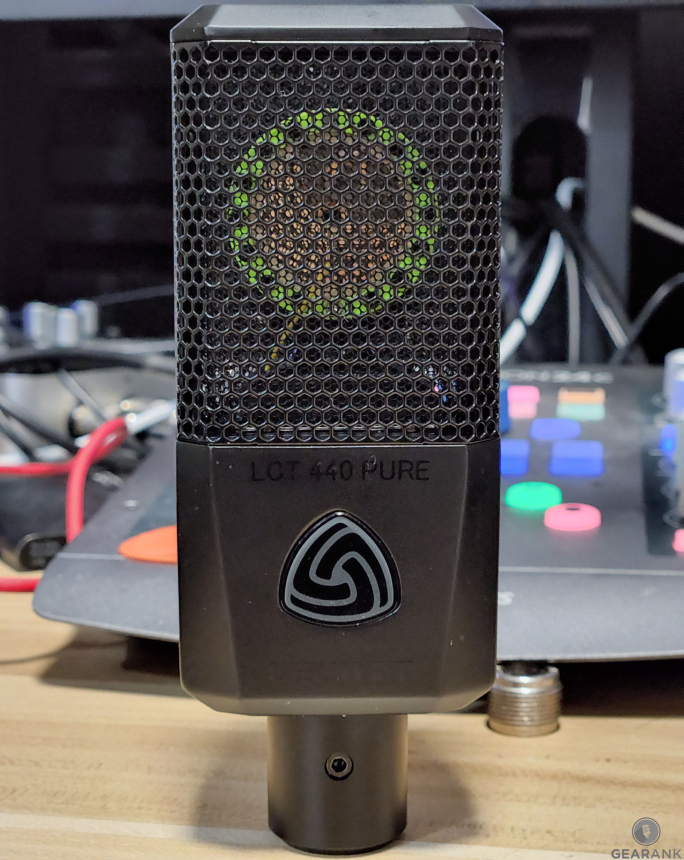
The microphone's design is bears a fleeting resemblance to those of Austrian mic manufacturer AKG. It's worth noting that Lewitt Audio was formed by an alumni of AKG, Roman Perschon.
I would love to pick Roman Perschon's brain about how they tweak the tonalities of their microphones someday because I feel it's no coincidence that the LCT 440 Pure sounds eerily similar to these sought after mics. Expect a longer format review in the future once I've gotten more mileage from it
One handy thing is that the pop filter is small enough to not obscure vision for singers or speakers reading from lyrics and scripts.
I should point out that some people the mic too sibilant; a trait it shares with the two expensive mics i keep mentioning. If you're looking for Neumann smoothness, look elsewhere as the LCT440 Pure has a very modern and airy sound designed to cut through in a modern pop mix.
Many people who have never worked with high end microphones like the Telefunken ELA M 251e and Sony c800g might not understand what makes the Lewitt LCT440 Pure's timbre and tonality so great. While it doesn't have the harmonically complex midrange of the 251e or the extreme high end detail of the Sony C800g, It fits well within their sound signature at a price most of us can afford.
If you're looking for an excellent pop vocal mic in this price range, the LCT 440 Pure definitely brings that big studio sound without the big studio price.
Specifications
- Type: Condenser
- Polar Pattern: Cardioid
- Frequency Response: 20 to 20,000 Hz
- Impedance: 110 ohms
- Max SPL: 140 dB
- Applications: Great all-rounder from vocals, acoustic guitar to drums
- Power Requirements: 48 V ± 4 V
| Website | Source | *Rating Value |
| Sound on Sound | Paul White | 98/100 |
| MusicTech | Mike Hillier | 90/100 |
Lewitt LCT 440 Pure Frequency Response and Polar Pattern Charts
Warm Audio WA-47Jr
Cons
- Mic is sensitive to background noise, handling and plosives
Pros
- A full, vibrant tone, controlled high end, and good presence in the mids.
- Fantastic on hip hop vocals and voice overs
- The richness of the lower mids sound amazing on Bass voices
- Cymbals are crystal clear without sounding harsh
Looking for a versatile FET condenser microphone that delivers a vintage sound profile without breaking the bank? Look no further! The Warm Audio WA-47jr is perfect with its large-diaphragm K47-style capsule, premium Toshiba FETs, and discrete analog circuitry. This mic offers a rich, full-bodied sound perfect for recording vocals, drums, guitar cabs, acoustic guitars, strings, overheads, horns, and bass cabs, with analog warmth and pristine detail.
This microphone delivers a warm, punchy sound that adds character to your audio recordings. The high frequencies are beautifully balanced, avoiding harshness or sibilance, and the midrange presence is perfect for various genres. It's an ideal choice for hip-hop vocals and voice-overs, capturing the nuances of rap vocals and providing that signature punch. The WA-47jr is also great for recording bass voices and adding depth and character. Drummers and percussionists will appreciate its ability to capture cymbals without any harshness.
While the microphone excels in sound quality, it can be sensitive to external noise. It's essential to be mindful of your recording environment and invest in a good shock mount to minimize handling noise and plosives. But don't let that discourage you! The Warm Audio WA-47jr perfectly balances vintage warmth and modern clarity, making it a fantastic choice for seasoned professionals and budding audio enthusiasts.
In summary, the Warm Audio WA-47Jr is a versatile, affordable microphone that delivers vintage warmth and modern clarity. Whether you're a seasoned pro or starting, this mic is a must-have in your collection.
Specifications
- Type: FET Transformerless Condenser
- Polar Pattern: Cardioid, Figure-8, Omidirectional
- Frequency Response: 20Hz-20kHz
- Impedance: 100 ohms
- Max SPL: 147dB SPL, 157dB with pad
- Applications: Vocals, Drums (Toms, Overheads, Acoustic Guitar)
- Power Requirements: 48V phantom power
| Website | Source | *Rating Value |
| Music Connection | Barry Rudolph | 95/100 |
| MusicTech | Mike Hillier | 100/100 |
Frequency Response and Polar Pattern Charts
Click on the charts to expand
Best Condenser Mic Under $300 - Small Diaphragm
sE Electronics sE7
Cons
- Low frequency response is average
- May be too sensitive for capturing specific elements in a room
Pros
- Great for overheads and hi-hats
- Mix ready tonality for recordings
- Great sound rejection from sides and back
- Realistic tone capture
- Great clarity and separation especially for cymbals
The sE Electronics sE7 is a microphone that is great for recording music, podcasts, or anything else that requires a microphone. It's affordable and has many features you would expect to find on more expensive microphones.
Regarding sound quality, the sE7 does an excellent job reproducing a range of frequencies. It sounds balanced and lively without being too harsh on the ears. However, it may not do well with particular sounds, like "p" or "b" sounds.
The sE7 is built well and looks like an expensive microphone. It's very durable and can handle loud sounds without distorting. It also has features that can help you adjust the sound, like a filter that reduces low frequencies and a pad that lowers the volume.
Compared to other microphones, the sE7 holds its own. It may not sound as good as more expensive microphones, but you can get it to sound pretty good with some adjustments.
Overall, the sE Electronics sE7 is an excellent microphone for anyone who wants to record music, podcasts, or anything else. It's affordable, durable, and sounds good. Just be careful not to speak too loudly into it or make certain sounds too close to the microphone.
Specifications
- Type: Condenser
- Polar Pattern: Cardioid
- Frequency Response: 20Hz-20kHz
- Impedance: <200 ohms
- Max SPL: 136dB SPL, 156dB (with pad)
- Applications: Acoustic guitar, piano, drums and choirs
- Power Requirements: 48V phantom power
Best Condenser Mics Under $500 - Large Diaphragm
Aston Microphones Spirit
Cons
- May get too sibilant
- Integrated pop filter might not attenuate louder plosives
Pros
- Great for picking up a large group of performers
- Three polar patterns make it incredibly versatile
- Internal shock mount and integrated pop filter do a decent job
- Great vintage-modern tonality
The Aston Spirit, a large-diaphragm condenser microphone from Aston Microphones, is an outstanding mic that maintains the company's tradition of excellence. Let's delve into the technical details:
The Spirit's design is similar to its sibling, the Aston Origin, featuring a rugged tumbled-steel body and a wave-form mesh head that gives it a unique and visually appealing aesthetic. It's slightly taller than the Origin, but the overall build quality remains impressive.
The Spirit's switchable polar patterns (cardioid, omni, and figure-eight) make it a stand-out feature. This versatility allows you to adapt the microphone to various recording scenarios, from vocals to acoustic instruments, even room ambience.
The Spirit's performance on a kick drum was impressive, with top-end definition that was articulate and admirable. Switching to the figure-eight pattern added low-end weight, similar to a Neumann U87. However, it required some EQ adjustments to maintain clarity in the top end. As a vocal mic, the Spirit delivers a bright sound without being overly sibilant, making it suitable for both high and low male vocals. Acoustic instruments also benefit from the Spirit's transparent and detailed sound.
The Spirit offers excellent value for money. Considering its build quality, versatility, and sound performance, the Spirit competes favorably with more expensive microphones.
The Aston Spirit is a versatile workhorse that delivers professional-grade sound without breaking the bank. Whether you're a home studio enthusiast or a seasoned pro, this microphone deserves serious consideration.
Specifications
- Type: Condenser
- Polar Pattern: Cardioid, Omni, Figure-8
- Frequency Response: 20Hz-20kHz (±3dB)
- Impedance: not specified
- Max SPL: 138dB SPL
- Applications: Vocals, Acoustic instruments, Room Mic and Distant Micing
- Power Requirements: 48V phantom power
"
"
| Website | Source | *Rating Value |
| Sound On Sound | Paul White | 95/100 |
| MusicRadar | Robbie Stamp | 90/100 |
TZ Stellar X3
Cons
- Case clips a bit flimsy
- Might not handle loud guitar speaker cabs
Pros
- Sound quality is comparable to high end mics
- An ideal choice for a wide range of recording applications
- True-to-life sound great for recording acoustic instruments
The Stellar X3 microphone is an excellent choice for anyone looking for a reliable and affordable condenser microphone. It has a sleek and professional design with a matte black finish that gives it a modern and classy appearance. The microphone grille is well-constructed and adds to its overall aesthetics.
One of the most important things for a microphone is its sound quality and the Stellar X3 delivers. It captures vocals and instruments with clarity and precision, making it great for recording podcasts, voice-overs, or musical instruments. It also has low self-noise that ensures clean recordings even in quiet environments.
The cardioid pattern of the microphone focuses on the sound source directly in front of the mic, minimizing background noise and making it ideal for solo recording, interviews, and live streaming. However, it doesn’t have switchable polar patterns like some higher-end mics.
Compared to other popular mics like Audio-Technica AT2020 and Rode NT1, the Stellar X3 holds its own in terms of performance despite not having the same brand recognition.
The TZ Stellar X3 is a solid choice for anyone looking for a reliable and affordable condenser microphone. Whether you’re a beginner or a seasoned audio professional, give the X3 a serious listen—it might surprise you!
Specifications
- Type: Condenser
- Polar Pattern: Cardioid
- Frequency Response: 20Hz - 20kHz
- Impedance: 110 Ω
- Max SPL: .5% THD: 135dB
- Applications: Vocals, Acoustic Guitar, Drum Overheads, Speech
- Power Requirements: 48V Phantom Power ±4
Lewitt LCT 441 Flex
Cons
- No low cut and pad switches
- Switching and electronics add potential points of failure
Pros
- Versatile mic for a wide array of sound sources from vocals to drums to ambient recordings
- Multiple Polar Patterns
- High SPL handling
- Low self-noise
In a market populated with so many multi-pattern condenser microphones, Lewitt not only chose to stand out with their "House Sound" for the LCT 441 Flex, I imagine their meeting room during their conceptualization for the 441 Flex to go something like..
"...What if we put EIGHT polar patterns in a tiny mic?" (cue applause)
Always keen on presenting themselves as a forward-thinking company, Lewitt did just that. The LCT 441 Flex features 8 Polar patterns: 5 regular patterns, and 3 reverse patterns where the pickup point is behind the mic; useful for miking up cabs while still being able to see the pattern indicator.
The mic itself is configured by using two buttons to select the patterns. The selected pattern lights up in front of the mic. Another feature is a clipping indicator on the logo: it lights up red to indicate clipping at the source. This is great for figuring out the ideal distance from a loud sound source that wont clip the internal circuitry of the mic.
Soundwise, the 441 shares a lot in common with the more affordable Lewitt LCT 440. I tested the 441 out versus the 440 and found little to no differences between them on the cardioid mode. On other modes however, the 441's tonal balance shifts depending on which pattern is selected. This is because more or less of the room / environment comes into play in the captured sound.
Although I ended up choosing the 440 for my studio for now, the 441 is still on my wishlist as a more versatile version of the 440. I grew to like the sound of the 440 enough to justify a purchase of the 441 for additional options during recording.
One con, while not really immediate to me, is that I fear that part failure might become an issue down the road especially with the switching system and lights on the microphone. Another con that is reflected by some of the user reviews for the 441 is the lack of a low cut switch and pad. Given the polar pattern versatility, having no pad and low cut seems to have put a limit on how well the mic would fit various sound sources.
If you want a microphone with a crisp, clear sound with multiple polar patterns for just about anything you can put in front of it, the Lewitt LCT441 Flex is an excellent microphone. From vocals, to electric guitar, to drums, the only limit to the 441 is extremely low-end heavy sound sources.
Specifications
- Type: Condenser
- Polar Patterns: Omni, cardioid, wide cardioid, super cardioid, figure-8, reverse cardioid, reverse wide cardioid, and reverse super cardioid
- Frequency Response: 20 to 20,000 Hz
- Impedance: 54 ohms
- Max SPL: 144 dB
- Applications: Vocals, acoustic and electric guitar, drums, room mic'ing, ambient recordings
- Power Requirements:48 V +/- 4 V
| Website | Source | *Rating Value |
| Sound on Sound | Paul White | 92/100 |
Lewitt LCT 441 Flex Frequency Response and Polar Pattern Charts
Best Condenser Mics Under $500 - Small Diaphragm
Shure SM81
Cons
- Needs slightly more gain than other SDC's
Pros
- Flattering for acoustic instruments and drums
- Great, natural tonality for almost any sound source
- Plays well with many types of preamps
At the heart of this mic is a small diaphragm condenser that adds tube-like coloration to the sound, which better captures sonic nuances that most listeners appreciate.
The capsule is also lighter than many of its competitors, resulting in better background and handling noise rejection, even more so when enabling its built-in -10db Pad. On top of that, the SM81 comes with a low cut filter that allows it to better capture the nuances of virtually any sound source, from vocals, to acoustic guitars to loud guitar amp cabinets.
The usual downside of small diaphragm mics is its lack of frequency response, but this doesn't seem to be very noticeable with the SM81, with its frequency response of 20Hz-20kHz.
It's really hard to find fault with it, especially for acoustic guitars, other than its natural limitation of not having the same low frequency emphasis as many large diaphragm mics.
Although it has very few cons, one thing to note however, is that it might need a little more preamp gain.
With its incredibly high ratings and Shure's reputation, do yourself a favor and get the Shure SM81 if you're looking for good condenser mics in the sub $500 price range. It finds use with many instruments from acoustic guitar to drum overheads to orchestral recordings.
Specifications
- Type: Condenser
- Polar Pattern:
- Frequency Response: 20Hz to 20kHz
- Impedance: 150 Ohms
- Maximum SPL: 136dB (146db with Pad)
- Applications: Live vocals, acoustic instruments, guitar amps
- Power Requirements: 48V
| Website | Source | *Rating Value |
| Everything Audio Network | John Gatski | 90/100 |
| Tweakheadz Lab | Editor | 96/100 |
Shure SM81 Polar Pattern Chart:
Shure SM81 Frequency Response Chart:
Best Condenser Mics Under $1000 - Large Diaphragm Condensers
Neumann TLM 102
Cons
- Doesn't exactly sound like vintage Neumanns
- Can be too airy for whispery female vocals
- Cardioid only
Pros
- Great clarity and detail
- Excellent transient response
- Great for a wide variety or sources
- Small size won't obscure vision for reading lyrics/scripts
Neumann is often associated with microphones that cost up to $8000. But they do offer a more reasonably priced large diaphragm microphone like the TLM 102.
The TLM 102 was developed as an affordable offering from the legendary microphone brand. It was designed to accentuate the 8kHz to 12kHz for voices, making vocals sound crisp and clear while maintaining just the right amount to avoid sibilance and harshness.
A transformerless output stage ensures transparency and clarity with great low frequency extension.
Like its more expensive siblings, the TLM 102 is also made in Germany.
Usually, vocal mics that have an accentuated treble response tend to get sibilant or harsh. The TLM 102 has all the clarity available without any harshness that is common with cheaper condensers.
On acoustic guitar, the high frequency focus brings out strums with more detail, enabling tracks to settle in well even in dense mixes.
The TLM 102 gets you a modern take on the Neumann house sound in a relatively affordable package compared to their flagships. Get it if you need a premium sounding mic for vocals and acoustic guitar that can handle an odd percussion track here and there should you need it.
Specifications
- Type: Condenser
- Polar Pattern: Cardioid
- Frequency Response: 20Hz to 20kHz
- Impedance: 50 ohms
- Max SPL: 144 dB
- Applications: Recording vocals, acoustic instruments, brass, and percussion
- Power Requirements: +48V
| Website | Source | *Rating Value |
| Sound On Sound | Paul White | 94/100 |
| RecordingHacks | Paul Stamler | 94/100 |
Neumann TLM 102 Frequency Response and Polar Pattern Charts
Warm Audio WA-251
Cons
- Doesn't sound exactly like the originals
- Build quality and accessories felt cheap
Pros
- Great vibe and sweet tone on a variety of voices
- Fits in modern mixes better than some vintage originals
- High quality componentry
Warm Audio is known for their vintage-modern reproductions of legendary gear. The WA-251 is Warm Audio's take on the ELA M 251E tube mic; a favorite of artists like Ariana Grande, Justin Bieber, Adam Levine and more.
While not an accurate reissue, Warm Audio took the time to study vintage tube condensers to better understand the tone, circuitry and overall vibe the 251's were known for.
The custom designed WA-12-B-60V capsule is an all brass capsule with a 24k gold sputtered 6 micron, NOS PET film (mylar) diaphragm. The transformer is by CineMag USA.
Some vintage examples sound great on their own but don't mix well with modern music; I don't own an original but owners of these vintage examples have mentioned that the WA-251 fits modern mixes better while still retaining the rich midrange harmonic the original units are known for.
While in the upper level of price range for most people, the WA-251 gets you close to the vintage vibe of mics costing nearly 10 times more. Its harmonically rich midrange and sweet tonality make it great for modern pop vocal recordings and acoustic guitars. But it's not just a mic for vocal or guitars, try it as an overhead mic as well!
Specifications
- Type: Tube Condenser
- Polar Pattern: Cardioid, Omnidirectional, Figure-8
- Frequency Response: 20Hz-20kHz
- Impedance: 200 Ohms
- Max SPL: 132dB SPL
- Applications: Recording vocals, percussions, drums and acoustic instruments
- Power Requirements:Warm Audio External Power Supply (included)
| Website | Source | *Rating Value |
| ProTools Expert | James Ivey | 94/100 |
| MusicTech | John Pickford | 90/100 |
Warm Audio WA-251 Frequency Response and Polar Pattern Charts
Best Condenser Mics Under $1000 - Small Diaphragm
Neumann KM 184
Cons
- None aside from the fact that a stereo pair will be out of budget for most
Pros
- Natural sounding SDC with great directionality and high max SPL
- Stereo pairs easily matched because of tight production tolerances from Neumann
- Great for stereo recording acoustic guitars and drums
The Neumann KM 184 is a transformerless, small diaphragm condenser mic.
The design helps eliminate off-axis coloration for a more consistent frequency response.
Neumann refers to the mic as "universal" because of the high max SPL which allows usage with loud sound sources.
It is an excellent mic for acoustic guitar. It also pairs well with "Blackface" Fender amps and gives a rich, full-ranged but balanced sound.
Stereo pairs give great natural imaging for binaural recordings. Stereo recordings of room mics also had a sense of detail and upper frequency sheen versus using an LDC. This can be advantageous for kits with dark sounding cymbal sets.
The KM 184 is an essential microphone for any mic collection thanks to its natural and transparent tonality. Its great imaging and consistency allows for great stereo recordings with minimal phase issues. It works best as a stereo pair however, acquiring two may be out of reach for the more frugal among us.
Specifications
- Type: Condenser
- Polar Pattern: Cardioid
- Frequency Response: 20Hz-20kHz
- Impedance: 50 ohms
- Max SPL: 138dB
- Applications: Recording vocals, percussions, drums and acoustic instruments
- Power Requirements: +48V
| Website | Source | *Rating Value |
| Gearspace | jnorman | 100/100 |
| Frary Guitar | Peter Kun Frary | 98/100 |
Neumann KM 184 Frequency Response and Polar Pattern Charts
Things to Consider When Buying A Professional Condenser Microphone
-
Diaphragm size refers to the mass of a mic's diaphragm which vibrates in response to sound. This vibration translates sound waves into electrical signals. As such, the mass of the diaphragm determines important mic specifications like sound pressure level handling, dynamic range, sensitivity, and more. The general rule is that larger diaphragms capture more detail but are not good at handling high sound pressure levels. Smaller diaphragms are usually not as good as their larger counterparts when it comes to sonic quality, but they can better withstand loud sound sources like cymbals, drums and guitar amps. Condenser mics usually fall under three diaphragm size categories - Small, Medium and Large with Small and Large being the two most common. Understanding the different diaphragm sizes is crucial in answering the question What is a Condenser Microphone.
-
Polar Patterns describe the area where the mic actually listens to sound. Cardioid is the most popular polar pattern because it is good at blocking the back side of the mic for reducing background noise and feedback. There are even variations of cardioid like Supercarioid and Hypercardioid with narrower areas of sound absorption. Other popular polar patterns include omnidirectional (absorbs sound from all directions), figure 8 (absorbs sound from the back and front while rejecting the sides) and shotgun (tighter and longer front absorption). Since condenser mics are used to record different types of instruments and sound sources, some manufacturers equip them with switchable polar patterns. If you're not familiar with polar patterns then you can see charts and further information here. In addition to having the right polar pattern, you can also use a noise gate to keep noise at bay .
-
Frequency response is usually represented in the form of a chart that describes the manner by which microphones emphasize and de-emphasize frequencies. For condenser mics, a flat response is ideal, but it may not always be the case depending on musical style, sound source and preference. This is not a strict rule but ordinarily, mics which emphasize the highs can compensate for vocals or instruments that have a warm or dull timbre, while trebly instruments and vocals work well with mics that have a smoother, warmer top end to manage sibilance. .
-
Some manufacturers provide proximity effect data for their microphones via an extra line in the frequency response chart. This shows the low frequency emphasis that happens as the sound source gets closer to the mic, this is especially obvious with cardioid dynamic mics, and can also be noticeable with most condenser mics. This increase of volume in bass frequencies is sometimes used to good effect, but it can also be problematic in certain situations.
-
Since condenser mics use electricity to capture sound they require a power source. Most condenser mics run on phantom power (usually provided by a mixing console or a USB audio interface) while there are some that can run on batteries. If you'll be working with gear that doesn't have phantom power, you'll need to invest in a mic preamp with phantom power capability. Condenser USB mics can get the power directly via the USB cable.
-
This parameter is an important consideration, especially if you're planning on using the mic to capture loud sound sources like guitar amplifiers or drums. The higher the MAX SPL the better, just note that some high SPL mics may compromise audio signal quality.
-
Condenser mics are often paired with Pop filters, but what does a pop filter do? Pop filters are screens that are usually positioned between the singer and the mic to prevent air from hitting the mic diaphragm directly. They are sometimes bundled with condenser mics, but they are also very cheap to acquire in case you bought one with no pop filter included. If you want to know how to reduce background noise on mic, you need to be acquainted with pop filters.
-
What's better than having a single condenser mic... get a matched pair and Record in Stereo, as many professionals actually do. Stereo recording is usually employed to add space and realism to any sound source, this is the reason why some manufacturers release matched condenser mics that are designed to work in stereo. While you can use two regular condenser mics to capture in stereo, slight differences between unmatched microphones often result in unwanted audio artifacts and phase issues.
-
Versatile mics allow you to save money by doing the jobs of multiple dedicated mics. Just don't expect them to have the same quality as specialized mics. Features to look out for include switchable attenuation pads, switchable polar patterns and built-in filters (high-pass or low-pass) and built-in attenuation pads. As always, there will be slight compromises to the sound because of the capsule or circuitry design.
Diaphragm Size
Polar Pattern
Frequency Response
Proximity Effect
Phantom Power
Max SPL
Pop Filter
Stereo Recording
Versatility
Best Condenser Microphone Selection Methodology
The first edition was published in 2018. The current edition was published on Feb 21, 2024.
After surveying major USA based music gear retailers, we placed 119 Large, Medium, and Small Diaphragm condenser mics on our short-list for rating analysis. We then collected ratings, reviews, forum discussions and other feedback about each mic which we then processed with the Gearank Algorithm to produce Gearank Rating scores out of 100 for each of them. A staggering 82,100 sources were processed during this procedure. We used the resulting Gearank Ratings to select from the highest rated options to further analyze and recommend. For more information about our methods see How Gearank Works.
About the Author and Contributors
Here are the key people and sources involved in this guide's production - click on linked names for information about their music industry backgrounds.
Lead Author & Researcher
Raphael Pulgar
I've been an audio engineer for 20 years specializing in rock and metal recordings. I also play guitar and produce original music for my band and other content creators.
Some of the recording gear I use in my studio includes the Focusrite Scarlett 18i20, Focusrite Scarlett Solo, Samson QH4 Headphone Amp and Cloudlifter CL-1. My mics include Aston Origin, Aston Element, Shure SM57, Rode NT1, Rode PodMic, MXL V67G and more as mentioned above.
Contributors
Jerry Borillo: Research.
Jason Horton: Editing and Illustrating.
Media
Main/Top Image: Created by Gearank.com using photographs of the Neumann KM 184, Rode NT2-A and Shure SM81.
The individual product images, frequency response charts and polar pattern charts were sourced from their respective manufacturers' websites, promotional materials or supporting documentation.




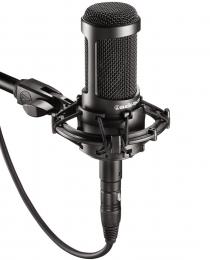
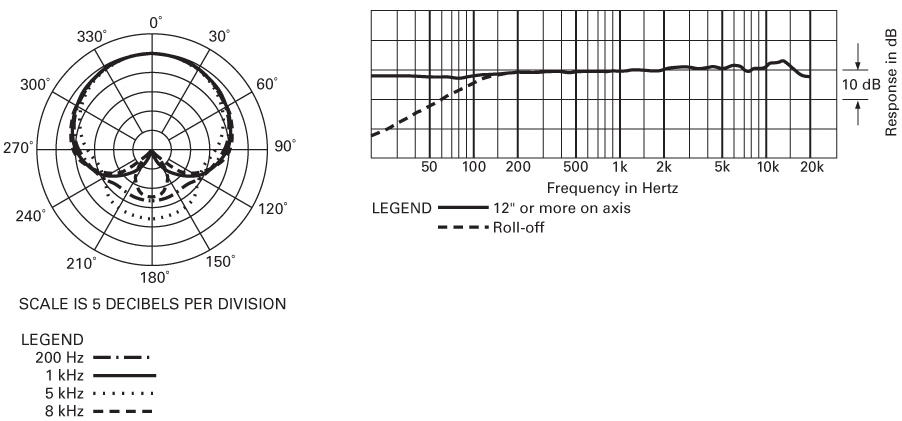
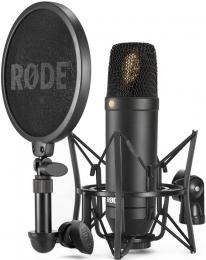

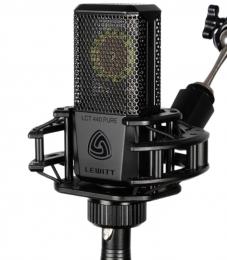
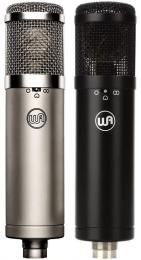



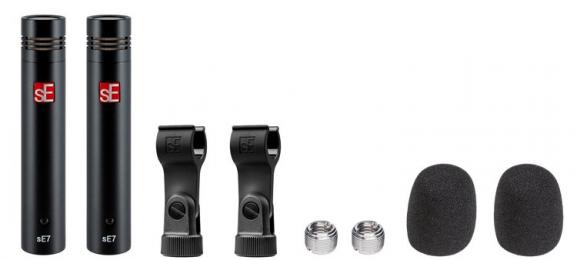

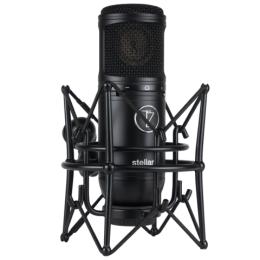
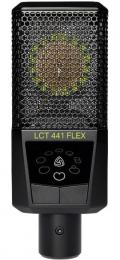

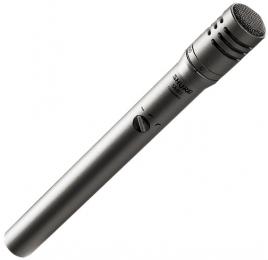
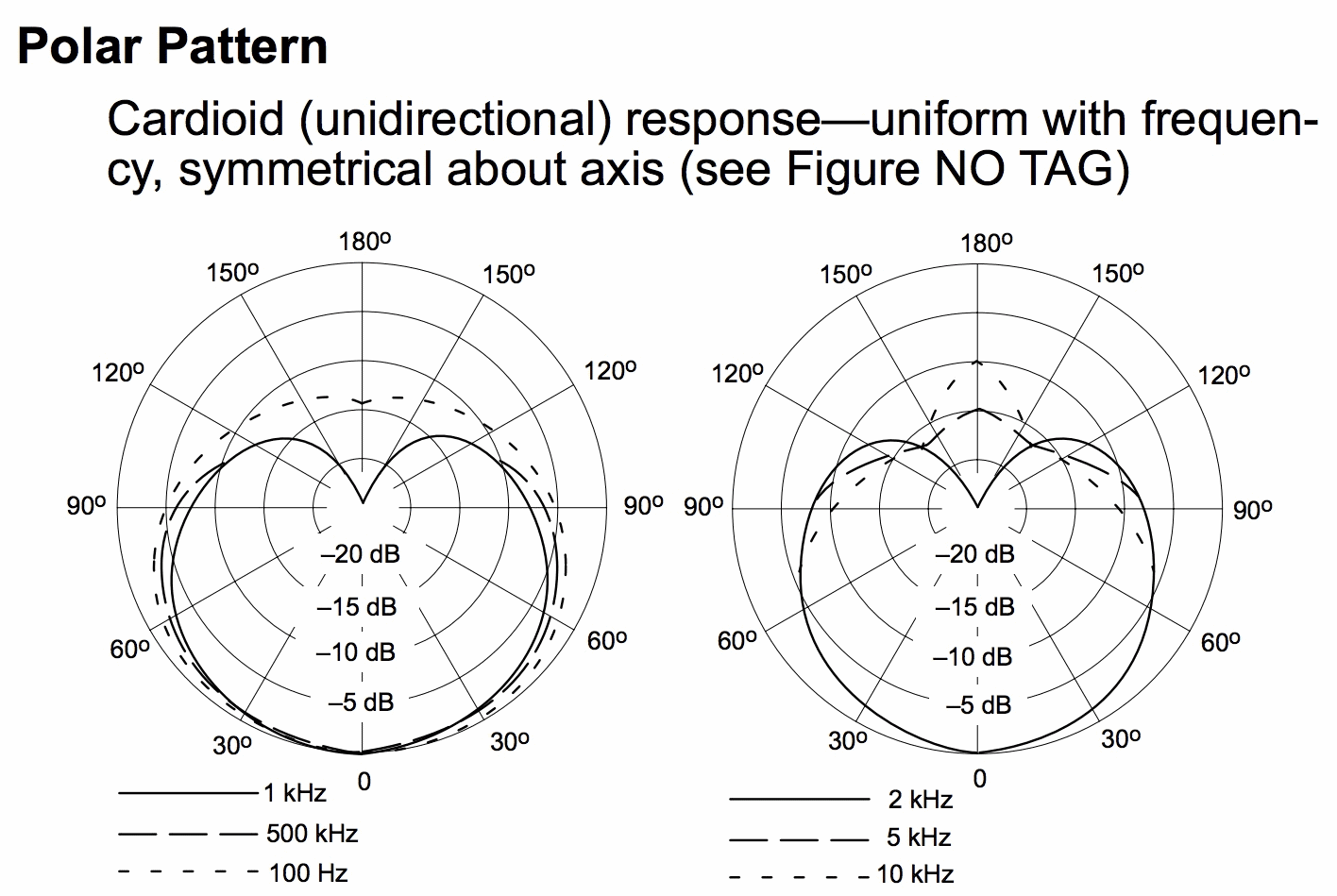
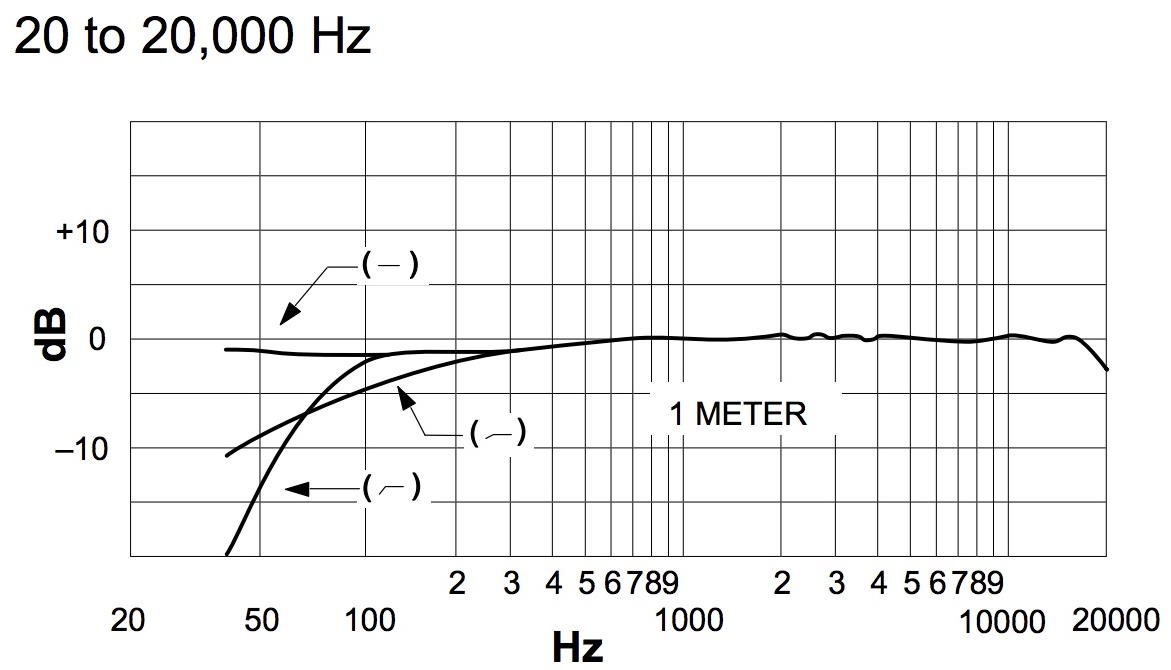
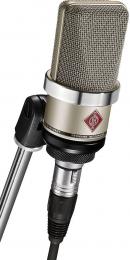
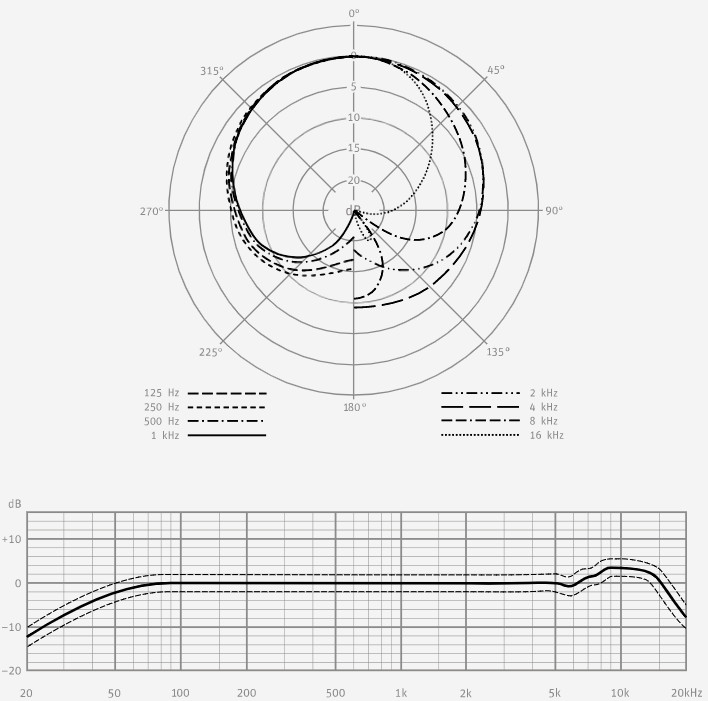




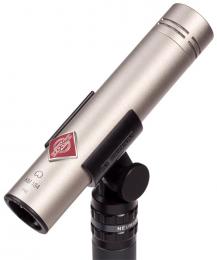

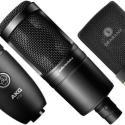
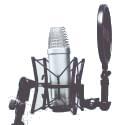
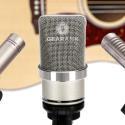
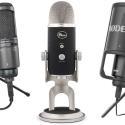
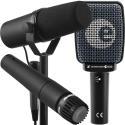
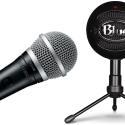
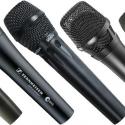
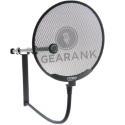
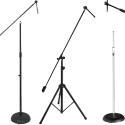
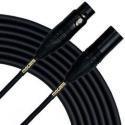
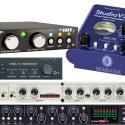
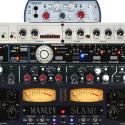

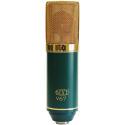
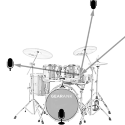
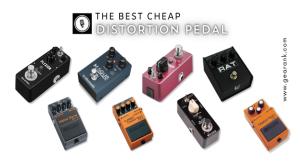
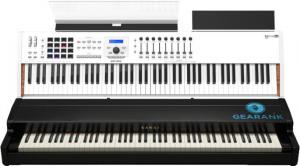
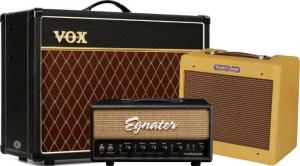
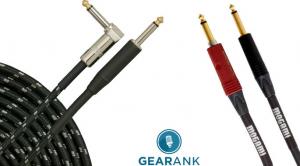
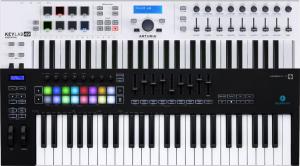
Comments
The following mics came off
Submitted by Jason Horton on
The following mics came off the recommended list above when we published the June 2022 Edition:
We have removed the following
Submitted by Jason Horton on
We have removed the following mic because it's no longer available: Blue Spark SL.
The publication of our April
Submitted by Jason Horton on
The publication of our April 2021 edition resulted in the following mics coming off the recommended list above, but you can still see our analysis of them:
Can you take a look at the
Submitted by Mason F (not verified) on
Can you take a look at the Behringer c-1
We have done that an
Submitted by Jason Horton on
We have done that and published a Gearank Rating which you can see here.
Note that the rating was calculated last year before the price dropped from $58 to $35.
Also note that this guide doesn't include microphones under $100 - to see our recommendations in that price range please go to our other guide: The Best Condenser Mics Under $100 - XLR & USB.
As a result of our March 2020
Submitted by Jason Horton on
As a result of our March 2020 update, which included removing handheld mics, the following came off our recommended list above, but you can still read our analysis of them: